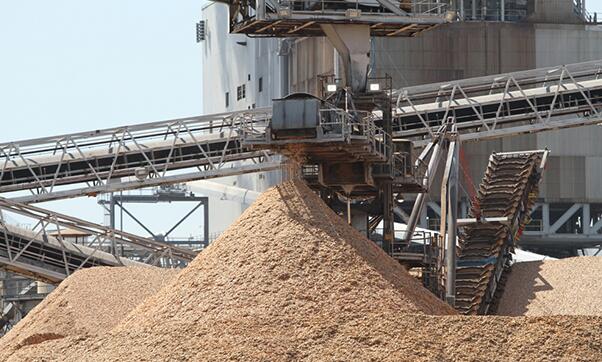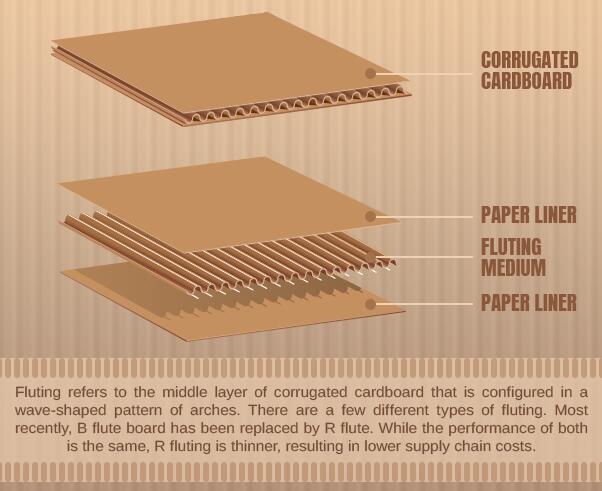An In-Depth Look at How the Corrugated Box Is Made
If you work in the packaging or shipping industry, you probably work with cardboard boxes daily. Corrugated cardboard boxes are one of the core products used to package and ship products of all types around the world, so they are an integral component in several businesses and industries.
While you may use them on a regular basis, you probably have never given much thought to where corrugated boxes come from or how they are manufactured. It is easy to forget that the boxes you depend on were once trees growing in forests spanning the globe. The process for transforming a tree into corrugated cardboard is actually quite fascinating, and it is more high-tech than you may realize.
How exactly is the humble corrugated box made? We’re glad you asked!

WHAT IS A CORRUGATED BOX?
Corrugated cardboard is an extremely versatile material that is used to protect, display and ship virtually all types of products. It is made using three layers of strong paper known as craft paper, which makes it strong, stiff and lightweight.

THE BASICS
Corrugated cardboard boxes come in a wide range of sizes, designs, strengths and shapes. They all share the same basic features, though. They are basically made up of a paper flute (more on that later) sandwiched in between two layers of kraft paper liners. The liners often contain a large percentage of recycled material, resulting in more eco-friendly packaging.
RAW MATERIALS
Corrugated cardboard is made primarily using fast-growing pine trees. Some large companies even own their own forests that span thousands of acres where trees are planted, matured, harvested for packaging and replaced with seedings. Only the trunks of these trees are used in the production of cardboard, so after they have been harvested, all the branches are removed.
The tree trunks are shipped by truck to pulp mills. Some of these mills are independently owned while others are owned by the largest packaging companies. Upon arrival at a mill, the trees go through a machine that removes their bark and chips them.
The chips then go through either a mechanical or a chemical pulping process. During the mechanical pulping process, the chips are ground down to reduce the wood to its individual cellulose fibers. This is typically done by forcing the chips against a revolving stone. Water is sprayed on the stone to remove the fibers, but this process does little to remove a non-fibrous component of wood known as lignin. Because lignin binds fibers together, it can reduce paper quality if it is not removed during the pulping process. However, mechanical pulping costs less than chemical pulping and generates a higher output, so the process is still widely used despite the reduced-quality outcome.

During the chemical pulping process, the chips are “cooked” down to reduce them to individual cellulose fibers. There are two different types of chemical cooking: sulfite and sulfate. Both options work well and produce high-quality pulp, but the sulfate process is more widely used.
Alkaline solutions are used to digest wood during the sulfate process, and sodium sulfate is added to increase the strength of the pulp. This is where the “kraft” name comes in, as it means “strength” in Swedish.
In some instances, recycled material is used instead of virgin wood. The liners produced using recycled fiber are usually of a lower quality, however, so they are only used as inner liners or as central liners in double-wall cardboard.
The resulting slurry of wood pulp is then pumped to a Fourdrinier machine — also known as a paper-making machine. This machine consists of square structures measuring up to 600 feet long with wire mesh. The paper is initially formed on these screens before being fed into steam-heated rollers with felt blankets that remove the excess water. Once dry, the finished liner is wound onto massive rolls for shipment.
FLUTING
Fluting refers to the middle layer of corrugated cardboard that is configured in a wave-shaped pattern of arches. There are a few different types of fluting. Most recently, B flute board has been replaced by R flute. While the performance of both types is the same, R fluting is thinner, resulting in lower supply chain costs. The thinner size also means it takes up less space while in storage, which is extremely beneficial for companies with limited room for storing materials. Also sometimes referred to as S flute or M flute, R flute improves print quality by as much as 30 percent, makes it possible to fit 30 percent more cases on a pallet and reduces carbon dioxide output from trucks by 30 percent due to its space-saving nature.

In double-wall boxes, different types of fluting may be used. If, for example, you see a box that says “AB flute,” it means that the top layer has A fluting and the bottom layer has B fluting. The first letter always refers to the top layer, and the second letter refers to the bottom layer.

评论
发表评论